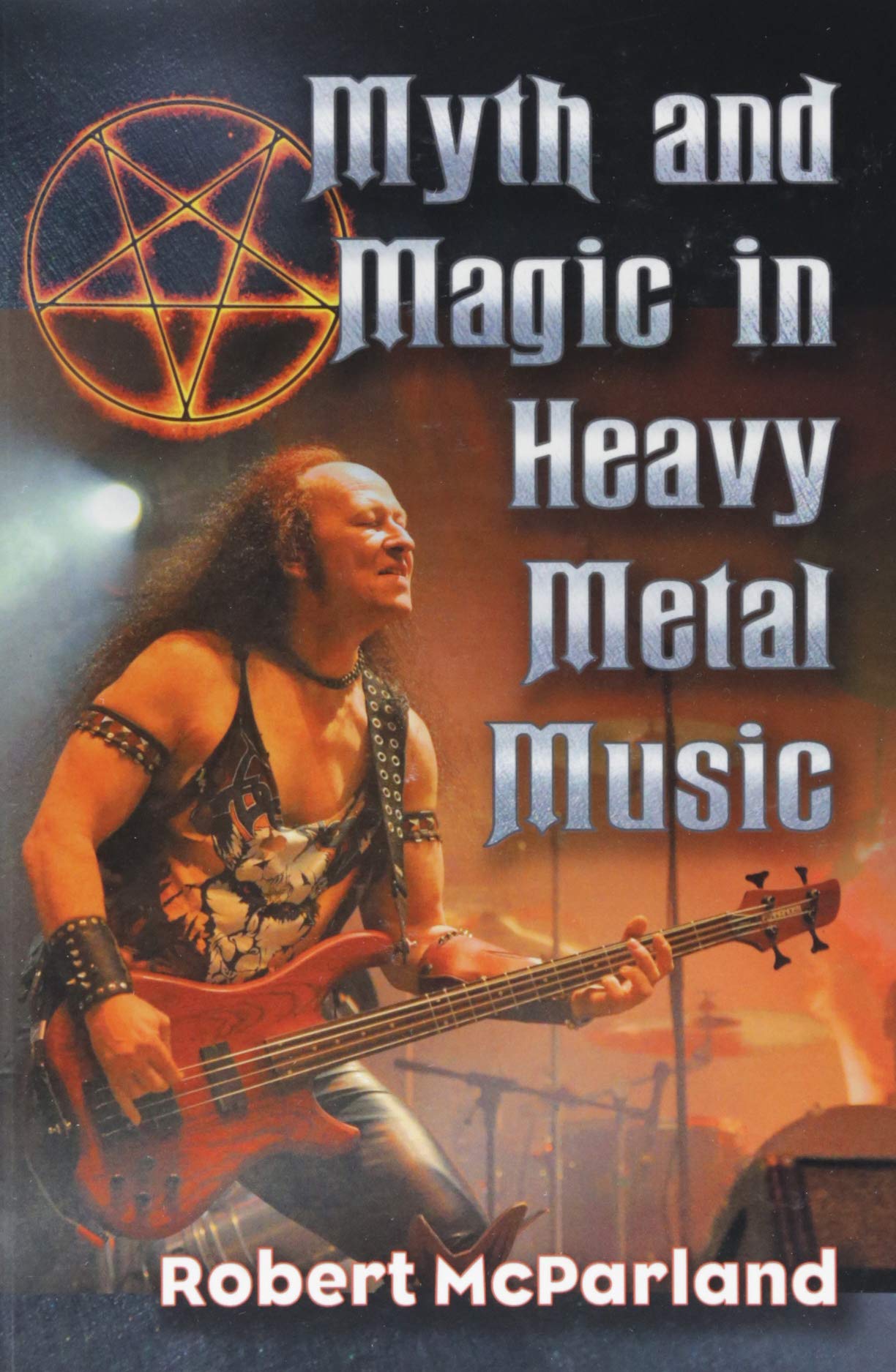
Robert McParland – Myth and Magic in Heavy Metal Music
- by J.N.
- Posted on 31-08-2019
This 202-page scholarly work by author Robert McParland, who is a professor of English and an associate dean of Arts and Sciences at Felician Univerity in New Jersey, was published last year by McFarland. What we are dealing with here is essentially a highly academic text on how heavy metal music and myth are inextricably linked and how said genre draws heavily on various tales and fables of old as well as other legends and ancient narratives in order to conjure up those imaginative and hugely atmospheric sounds that we associate with power metal, black metal, classic 70s hard rock, and so on and so forth.
McParland’s work is thorough, in-depth, and quite captivating with respect to the way in which he discusses and elaborates on the importance of the many myths that surround us and have a tremendous impact on the music that we listen to. The book is well-researched and yet the tone and language of the piece is sufficiently lively and concise most of the time, which entails that one does not lose focus or interest when immersing oneself in it. “Myth and Magic in Heavy Metal Music” focuses on many different aspects of mythology, some of which include Greek and Norse myths, but also other relevant and thought-provoking subjects such as psychoanalysis (dreams and Jungian archetypes among others) and the postmodern nuances of the metal genre as it stands today. For instance, McParland looks at how the Satan archetype and the demonic are represented on the self-titled album by Black Sabbath, the way in which Arthurian legends and Aleister Crowley’s magickal work manifested themselves within the lyrics and artworks of Led Zeppelin, how Whitesnake’s “Judgment Day” relates to Dante’s Inferno, and even how Morbid Angel’s early classics employ Lovecraft-ian imagery and delve into Sumerian myths. Those are just a few examples. Countless bands and artists such as Manowar, Dio, Einherjer, Ozzy Osbourne, and Celtic Frost make appearances throughout the book. In short, there is an awful lot to wrap your head around here. Not surprisingly, the prime example of how metal bands have incorporated everything from science fiction stories to horror literature and further on to ancient Greek parables and occultism is Iron Maiden.
I particularly enjoyed the chapters on Gothic Romanticism and Dark Romanticism and how those artistic movements and literary genres have had an enormous impact on heavy metal. If one thinks about the rebellious nature of metal as well as its ability to look to both an idealized past and a utopian future, it is remarkable just how many ties and relations there are between the aforementioned movements and modes of thought and such brilliant metal anthems as Iron Maiden’s “Murders in the Rue Morgue” and “The Rime of the Ancient Mariner”. The darkly romantic writings of such pioneers as Edgar Allan Poe and Samuel Taylor Coleridge loom large within metal. Given that Romanticism favored thoughts and feelings of the sublime (be they of terror or awe) as well as the irrational and the subjective (or the individual, if you will), it should come as no surprise that metal music owes a lot to the romantic writers of the past. Heavy metal is all about emotion and a way of making sense of the world (or perhaps wrestling with its constant changes or maybe even opposing modern-day society as a whole), and that is where such literary figures as Mary Shelley, Herman Melville, and John Keats may be said to figure prominently with respect to having inspired future generations of metal lyricists. Another highlight is the short analysis of the underrated Black Sabbath tune entitled “Lady Evil” and how that evokes images of ancient temptresses, nasty witches, and femme fatales.
The main problem with McParland’s otherwise fascinating literary work on heavy metal is that there are way too many repetitions and factual errors in it. Basic facts such as album release dates, the name of band members, song titles, and even album titles are quite often wrong, which is frustrating. Too many paragraphs and even whole sections are repeated also, which ruins the flow of the text in places. Finally, the author discusses a number of themes and subjects here and there that lack context, which is to say that he does not list or give any metal music examples to correspond with what he is dissecting. The whole point of “Myth and Magic in Heavy Metal Music” is to illustrate how metal and myth are woven together, but occasionally it fails to bridge that gap between concept and music.
“Myth and Magic in Heavy Metal Music” is definitely worth reading in that it offers a unique perspective on the music that we all love and the many things that course through its lyrics, but the editing is sloppy and one does get the impression that McParland is not so much a fan of the actual music but rather the mythical aspects of the genre. Still, you should give it a go if you are tired of reading standard rock music biographies and seek different impulses and ideas.
https://mcfarlandbooks.com/product/myth-and-magic-in-heavy-metal-music/
